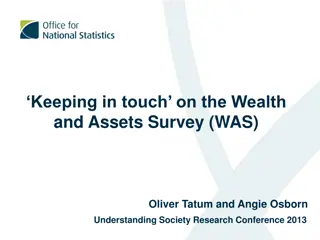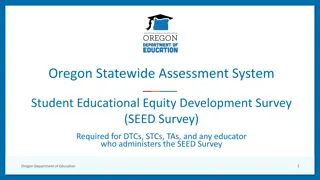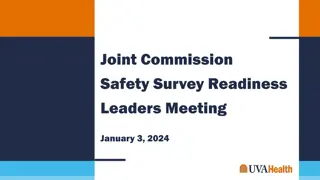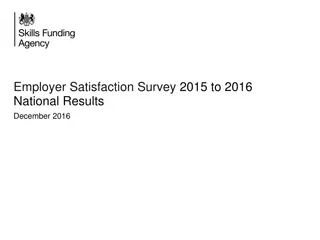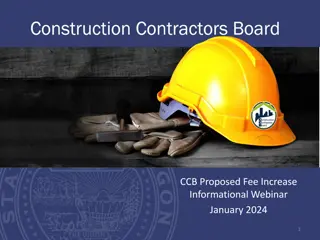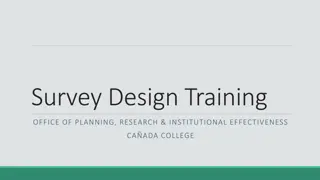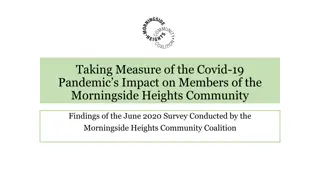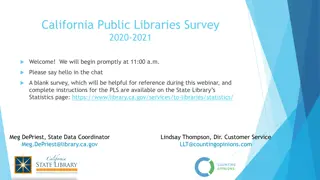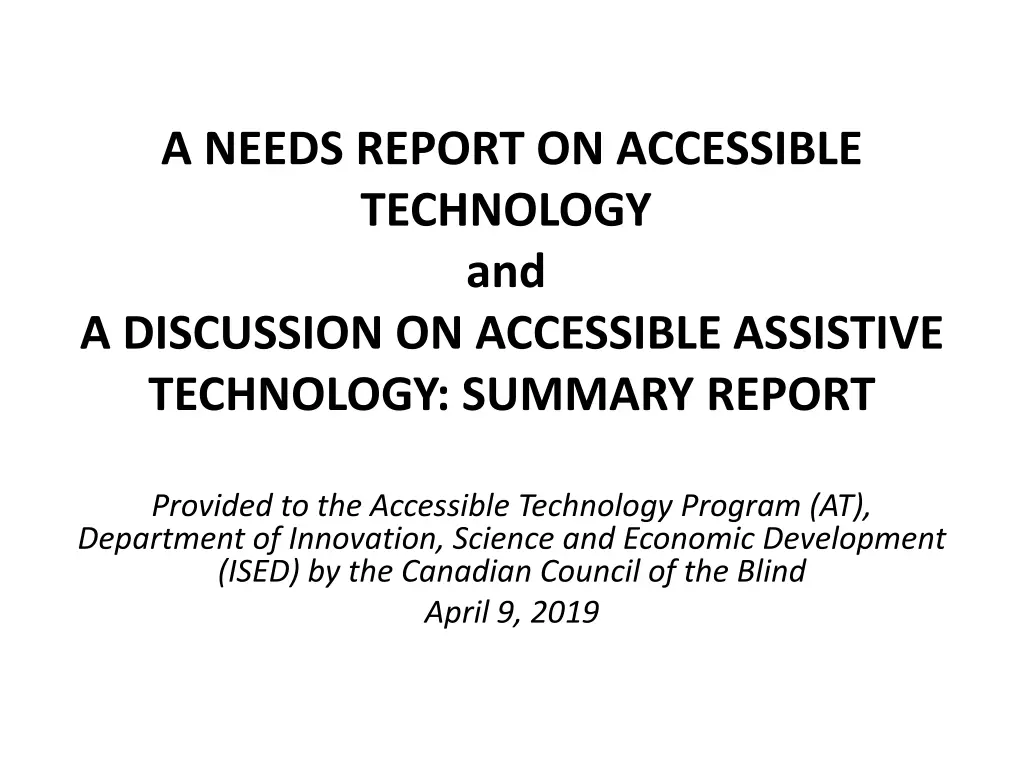
Accessible Technology Insights and Challenges in Canada
Explore a comprehensive report on accessible technology and assistive tools, analyzing demographic data, educational backgrounds, current employment status, assistive technologies used, training needs, and barriers faced by individuals with visual impairments. The report sheds light on the experiences and requirements of the blind and visually impaired community in accessing technology for employment and career advancement.
Download Presentation

Please find below an Image/Link to download the presentation.
The content on the website is provided AS IS for your information and personal use only. It may not be sold, licensed, or shared on other websites without obtaining consent from the author. If you encounter any issues during the download, it is possible that the publisher has removed the file from their server.
You are allowed to download the files provided on this website for personal or commercial use, subject to the condition that they are used lawfully. All files are the property of their respective owners.
The content on the website is provided AS IS for your information and personal use only. It may not be sold, licensed, or shared on other websites without obtaining consent from the author.
E N D
Presentation Transcript
A NEEDS REPORT ON ACCESSIBLE TECHNOLOGY and A DISCUSSION ON ACCESSIBLE ASSISTIVE TECHNOLOGY: SUMMARY REPORT Provided to the Accessible Technology Program (AT), Department of Innovation, Science and Economic Development (ISED) by the Canadian Council of the Blind April 9, 2019
Table of Contents Respondents Level of Vision Loss slide 3 Gender slide 4 Age slide 5 Highest Level of Education slide 6 Field of Study slide 7 Aspiration for Further Education slide 8 Current Employment Status slide 9 Current Employment in Field of Study slide 10 Barriers to Search for Employment slide 11 Assistive Technologies Currently Used slide 12 Training in the Use of Assistive Technologies slide 13 Current Level of Proficiency with Employment-Related Assistive Technology slide 14 Assistive Technologies Needed for Achieving Career Goals slide 15 Job Application Process Not Accessible slide 16 Major Impediments for Advancing in Present or Higher Employment Level slide 17 Types of Training Needed to Achieve Employment slide 18 Ideal Workplace slide 19 Geographic Survey Response Rate slide 20 2
Respondents Level of Vision Loss 60.00% 50.00% 40.00% 30.00% 20.00% 10.00% 0.00% Blind Partially-sighted Deaf-blind Multiple disabilities along with partial sight Multiple disabilities along with blindness Rather not say 426/453 responding 3
Gender 60.00% 50.00% 40.00% 30.00% 20.00% 10.00% 0.00% Male Female 442/453 responding 4
Age 35.00% 30.00% 25.00% 20.00% 15.00% 10.00% 5.00% 0.00% Under 18 18-24 25-34 35-44 45-54 55-64 65+ Rather not say 439/453 responding 5
Highest Level of Education 35.00% 30.00% 25.00% 20.00% 15.00% 10.00% 5.00% 0.00% Less than a high school diploma High school diploma or equivalent Trade certification Post-secondary certificate or diploma Bachelor's degree (e.g. B.A., B.S.) Graduate degree (Master s Degree or higher) 429/453 responding 6
Field of Study 30.00% 25.00% 20.00% 15.00% 10.00% 5.00% 0.00% Business Education STEM (science, technology, engineering, mathematics and computer sciences) Health care Humanities Law/legal Social services 296/453 responding 7
Aspiration for Further Education 42% Aspire for Further Education Do Not Aspire for Further Education 58% Note: 49% of Respondents Did Not Answer the Question 230/453 responding 8
Current Employment Status 45.00% 40.00% 35.00% 30.00% 25.00% 20.00% 15.00% 10.00% 5.00% 0.00% Student Unemployed Working part- time Working full- time Self-employed Retired Unable to work 443/453 responding 9
Currently Employed in Field of Study 60.00% 50.00% 40.00% 30.00% 20.00% 10.00% 0.00% Yes No 203/453 responding 10
Barriers to Search for Employment 60.00% 50.00% 40.00% 30.00% 20.00% 10.00% 0.00% Access to accessible and/or assistive technologies (e.g. computer software) Navigation to and from the workplace Web accessibility Workflow accessibility Worksite accessibility 110/453 responding 11
Assistive Technologies Currently Used White cane Smart phone Talking book player/app Screen reader (PC/Mac) Large print Tablet GPS Recorder for note taking Magnification (PC/Mac) Scan-and-read app/device for OCR Talking GPS app/device Artificial intelligence (AI) app for visual interpretation Combination of screen reader and magnification (PC/Mac) Guide dog Paper braille for note taking Distance magnification for navigation Refreshable braille display with computer/smart Braille note taker Head-worn camera for sighted visual interpretation Head-worn camera for OCR (optical character recognition) Head-worn camera for magnification 0.00% 20.00% 40.00% 60.00% 80.00% 436/453 responding 12
Received Formal Training in the Use of Accessible/Assistive Technology 40.00% 35.00% 30.00% 25.00% 20.00% 15.00% 10.00% 5.00% 0.00% Yes No Some 434/453 responding 13
Current Level of Proficiency with Employment-Related Assistive Technology 50.00% 45.00% 40.00% 35.00% 30.00% 25.00% 20.00% 15.00% 10.00% 5.00% 0.00% Beginner Intermediate Advanced 344/453 responding 14
Assistive Technologies Needed to Acquire/Learn for Successful Career or Achieving Employment Smart phone Artificial intelligence (AI) app for visual interpretation Screen reader (PC/Mac) Tablet GPS Talking GPS app/device Scan-and-read app/device for OCR Recorder for note taking White cane Combination of screen reader and magnification (PC/Mac) Talking book player/app Large print Head-worn camera for sighted visual interpretation Magnification (PC/Mac) Guide dog Refreshable braille display with computer/smart Head-worn camera for OCR (optical character recognition) Braille note taker Distance magnification for navigation Head-worn camera for magnification Paper braille for note taking 0.00% 20.00% 40.00% 226/453 responding 15
Job Application Process Not Accessible 60.00% 50.00% 40.00% 30.00% 20.00% 10.00% 0.00% Yes No 381/453 responding 16
Major Impediments for Advancing in Present or Higher Employment Level 60.00% 50.00% 40.00% 30.00% 20.00% 10.00% 0.00% My lack of specific skills and/or direct training Poor employer understanding of vision loss accessibility Lack of access to accessible and/or assistive technologies (e.g. computer software) Lack of workflow accessibility Lack of worksite accessibility Lack of Lack of legislated accessibility opportunities to mentor with experienced workers 235/453 responding 17
Types of Training Needed to Achieve Employment One-on-one training Mentoring Workshops Online training Internships Co-op placements Seminars Formal classrooms Textbooks/tutorials 0.00% 20.00% 40.00% 60.00% 80.00% 332/453 responding 18
Ideal Workplace 80.00% 70.00% 60.00% 50.00% 40.00% 30.00% 20.00% 10.00% 0.00% Work Work as part of a team Work in an office Work in an open-concept office Work from home Work in a retail setting Work outdoors independently 293/453 responding 19
CCB Survey Response Rate Province/Territory Percentage of Respondents Alberta 1% British Columbia 23% Manitoba 0.03% New Brunswick 0.02% Newfoundland and Labrador 0.03% Northwest Territories 0% Nova Scotia 0.05% Nunavut 0% Ontario 46% Prince Edward Island 0% Quebec 0.05% Saskatchewan 0.04% Yukon 0.003% 399/453 responding 20







